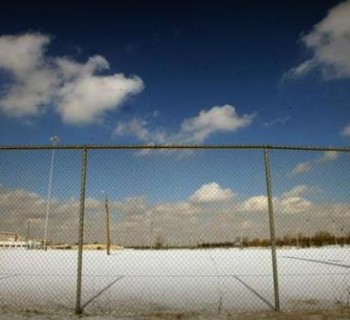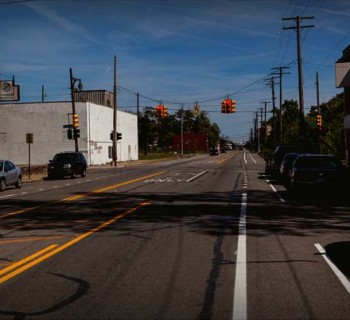Editor's Note: Any opinion expressed in this story is to be considered the writer's own and not the opinion of this website's owner, managers, director or editor.
OPINION—Out of many historic eras of socio-political tension have come Man’s visions of a projected future. These visions have taken many forms – both of distant utopias and impending dystopias – but all have reflected the general attitudes, hopes and fears of the contemporary culture from which they were conceived. Rodney Lockwood’s book, Belle Isle: Detroit’s Game Changer, just might be the unfortunate emblem of our changing times.
Lockwood’s Commonwealth of Belle Isle Plan is no less rooted in fantasy than an Orwellian novel, no more implementable than Ebenezer Howard’s Garden City Planning, and far less impressive in representation than Antonio Sant’Elia’s futuristic visions of La Città Nuova. Yet, it is worth analyzing, if only in a literary sense, as a means of assessing where we stand in our cultural values today.
Belle Isle: Conceived with the Public In Mind
Renowned landscape architect Frederick Law Olmsted designed Belle Isle in the 1880s, and at 982 acres it remains the largest island park in the United States. Once called Rattlesnake Island in the 19th century, its landscape is dotted with historic landmarks conceived by world-class architects, including Cass Gilbert, Albert Khan, and Eero Saarinen. The island has provided Detroit with an irreplaceable public amenity throughout its history and has therefore earned a place on the National Register of Historic Places.
Belle Isle may today be undermanaged as a result of the city’s financial insecurities, but it has never strayed from its duty to provide scenic and recreational refuge for the public.
From the 1870s onward, the City of Detroit was a migratory industrial destination swelling with nouveau riche and middle class opportunity. As factories blossomed, so did crowded urban settlements and ambient air pollution, but Victorian optimism found refuge in the era’s picturesque urban parks that were made available to all. This sentiment of publically held land for a communal purpose was a popular one of the times, and, importantly, was supported by all classes.
Thus, Belle Isle’s history as a public amenity is one of inclusion, and a celebration of the successes of the masses. Belle Isle may today be undermanaged as a result of the city’s financial insecurities, but it has never strayed from its duty to provide scenic and recreational refuge for the public.
The Rising Era of Inequality
Countless data reveals we live in a time of ever widening financial inequality. The 2010 U.S. Census recorded the largest income inequality since 1967 – the year the federal government began recording such data – with the top 20 percent of American wage earners making 49.4 percent of all income generated in the US. Compared to the 3.4 percent earned by those below the poverty line. That’s a 14.5-to-1 ratio, up from 13.8 in 2008 and nearly double a low of 7.62 in 1968. There’s also evidence that the gap may be even wider, given the completelyoutdated formula with which poverty is calculated.
Although income inequality in inter-city Detroit isn’t particularly high in a national comparison, a regional intra-city study might lend different results. Per the 2010 census, Detroit suffered from a 24.8 percent unemployment rate, with 26.1 percent of the population below the poverty level, and $28,357 recorded as a median household income. Compared to its Grosse Pointe neighbors – with a 9.6 percent unemployment rate, 2.5 percent of the population below the poverty level, and $89,492 as a median household income – its clear that socio-political boundaries mean business around here.
Income inequality isn’t just a local or a national issue; it’s regarded by the World Economic Forum as being the number one risk to the stability of a global society. Back home it’s pervasive in our culture, yet is often cloaked in talk of the American Dream. Rick Santorum even had the audacity last year on the campaign trail to praise income inequality as a fundamental American system to a crowd in Detroit. Now, equally as brazen, Lockwood is proposing to convert Belle Isle into an exclusive U.S. territory for the wealthy and global elite, founded on principles of classism and deregulation.
Slower Disaster, Same Capitalism
Naomi Klein’s concept of Disaster Capitalism is described as the “pervasive and insidious tendency for the ruling elites to exploit disasters – both natural and manmade – to push through legislation that the general populace won’t fight because they are shell shocked.” Conditions are typically ripe wherever there exists the disaster trifecta: financially strapped governments, people in need of services, and the ‘blank slate’ a disaster grants.
While the circumstances leading to Detroit’s adversity certainly vary greatly from that of a post-Katrina New Orleans or a post-Sandy New York, the aftermath contains shocking similarities.
More so than any other large city of comparable size, Detroit has withered in some neighborhoods to a veritable blank slate – though some would argue this point. Detroiters have also been suffering from what could be described as a slow disaster, which has lasted generations and has become, in many ways, a part of the culture.
We are also out of traditional options, and are looking for big ideas and out-of-the-box thinking to offer a fresh perspective and a way out of the darkness.
The people have trouble placing trust in an impotent and often corrupt government that has proven itself incapable of providing basic services. We are also out of traditional options, and are looking for big ideas and out-of-the-box thinking to offer a fresh perspective and a way out of the darkness.
But there are vultures lurking.
Big box stores are moving in with the development of the State Fair Grounds; anti-union ‘right-to-work’ legislation was enacted at the state level; Matty Maroun had the grounds to fight for the continued privatization of the Canadian-U.S. border crossing; the tax auction has become a monopoly board of free market trade largely void of any pesky “human” ramifications – all of these scenarios align with Klein’s power-grasping assessment of disaster capitalism.
Lockwood’s plan takes this one step further to really seal the deal on the argument. After Hurricane Sandy, economist Russell S. Sobel authored a post in the NY Times Forumsuggesting that “free trade zones” should be established in hard hit areas. In these areas all normal regulations, licensing, and taxes should be suspended, which is the essence of Lockwood’s proposal.
While Sobel’s plan tenuously outlines in relative detail how a Wal-Mart system of distribution management could in fact be an advantageous mechanism in times of crisis, Lockwood makes no distinct claims as to how he plans to, “solve current problems in the United States, and provide a solution for Detroit,” outside of providing construction jobs to non-violent felons – aka non-union labor.
At a luncheon held Monday at the DAC, Hal Sperlich, a backer of the project, predicted that many jobs will be created because they’re, “going to need golf courses and country clubs,” and we can’t have those Belle Islanders picking their own clubs now, can we?
Another Way Out
Hal Sperlich, a backer of the project, predicted that many jobs will be created because they’re, “going to need golf courses and country clubs.”
Combing through the book there is so much that could be highlighted as evidence of exclusivism, classism, and an outright reversion in social equality. From the $300,000 buy-in to the island location being chosen for “security” reasons, to its citizenship being rigorously restricted to pedigree, Lockwood’s book is nothing short of propaganda for class warfare. If Detroit is truly in crisis, and by most accounts it is, the way out is not through separatist thought, but in collective action.
The $1 billion that Lockwood and his backers have proposed as a purchase price for the island could be put to work to make Detroit a better place. Larry Mongo, another backer, still maintains development rights for the city-owned Metropolitan Building, though he has no plans for it. Imagine if that money was used to redevelop our aging downtown buildings a la Dan Gilbert, or to fund another arm or two of rapid transit along, say, Michigan or Jefferson. That kind of investment would have a grander impact than the rich sequestering themselves on a privatized, formerly public, city amenity.
As an advocate of public space and placemaking, I abhor Lockwood’s proposal as a foundational model of urban revitalization. In fact, I’m flabbergasted that this proposal is even getting any airtime and am suddenly nostalgic for that Zombie World proposal.
Somehow, being hunted by brain-eating zombies in the night seems more humane by comparison.










